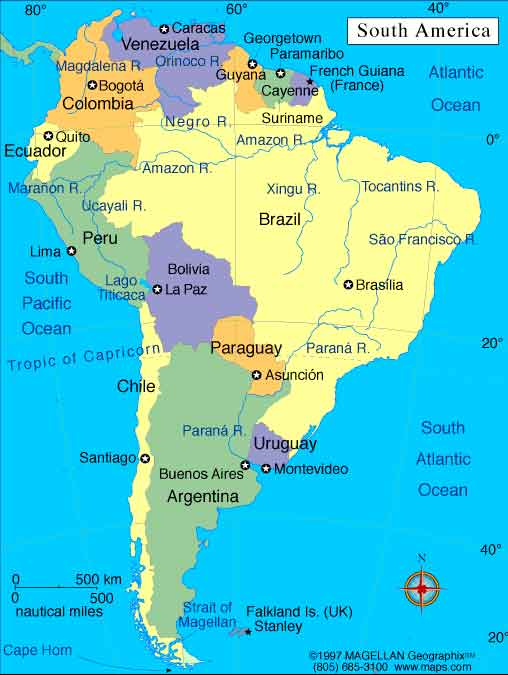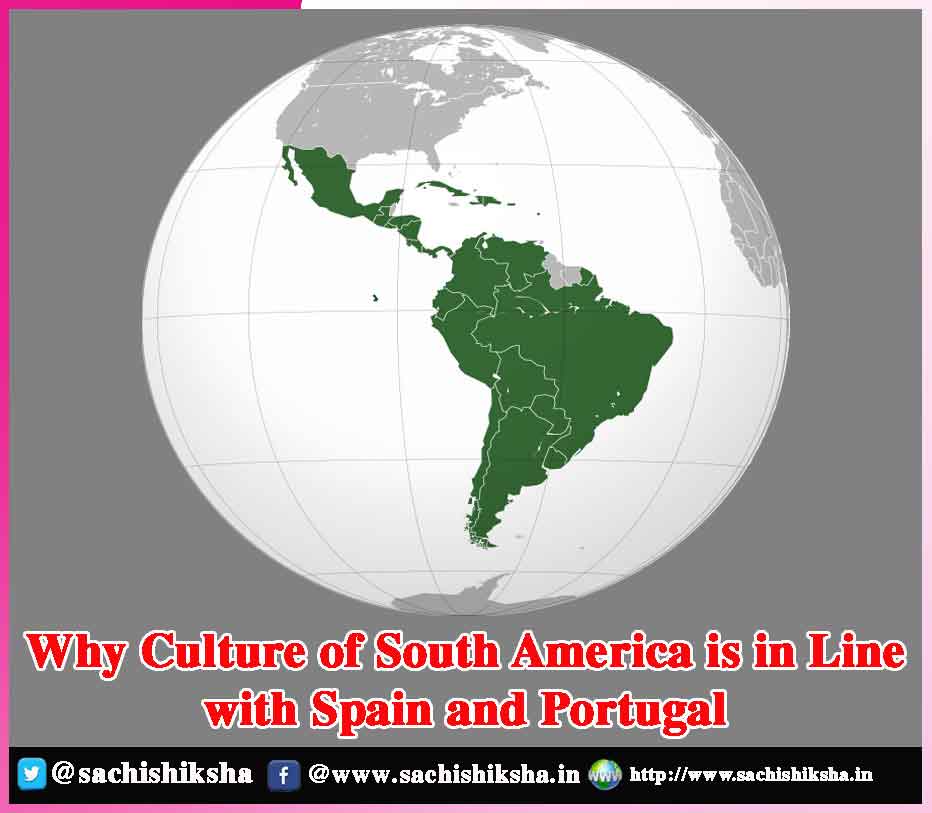Why Culture of South America is in Line with Spain and Portugal
The first Europeans countries to begin colonizing the Americas were Spain and Portugal. Although the Portuguese were among the earliest and most prominent world explorers, their efforts in the New World centered entirely on Brazil.
After Spain made its first discoveries in the Western Hemisphere, a conflict arose between Spain and Portugal concerning colonization rights to the New World. In 1494 a north-south Line of Demarcation was established, all territory east of the line fell to Portugal, while all territory west of it went to Spain. This agreement was called the Treaty of Tordesillas. With colonization came the emergence of a cultural entity known as Latin America. It is defined as a group of countries in the America where one of the Latin based languages are spoken.

Also Read:
- Scope of Foreign Languages in India
- Pink Lake – Lake Retba (Region of Western Africa)
- THE INVERTED TOWER OF PORTUGAL
Some important items that went from Europe to the America – wheat, coffee, sugar, peaches, livestock (pigs, cattle and sheep). Some important items that went from Africa to the America – horses, goats, pigs, some manufactured goods and slaves. Some important items that went from the America to Europe – squash, maize, beans, potatoes, tomatoes, peppers, cacao beans(chocolate) including gold and silver.Food and animals were not the only things traded across the Atlantic during this time period, people, diseases weapons, languages, and religions were also exchanged. Europeans brought new diseases to the Americans including small pox, measles, and influenza.
These diseases were devastating to the indigenous people because they had no immunity to these diseases. The new settlers created plantations and realized they needed more labor. They also needed workers to work in the gold and diamond mines. They began to import slaves from West Africa. Because Europe and Africa had been trading for many centuries, West Africans were immune to many of the European diseases.
The slave trade brought millions of African into Latin America. Over the centuries the cultures of the Europeans, Africans and Indigenous people blended together to form a unique cultural region known as Latin America.In the influence of the Europeans on Latin America’s population came into being. Intermarriages of people from different continents has produced a diverse culture. People with African and European ancestors are known as mulattoes. Mestizos are people whose ancestors were European and the indigenous people.
Most of the countries in Latin America were conquered by Spain, Spanish is the most common language spoken today in Latin America. Brazil was conquered by Portugal, so most Brazilians speak a form of Portuguese today. Indigenous languages are still spoken today by a small number of people in the region. Like language, the European colonists brought their religion to Latin America and taught it to the indigenous people. Roman Catholicism was the leading religion of both Spain and Portugal. Today over 90 per cent of Latin Americans say they are Catholic. Over time, religious celebrations, customs, and holidays in Latin America became a mixture of the beliefs of the indigenous people and Catholicism.
Music, dance, poetry form the backbone of South American culture. Dated in the 15th century it was the time Europeans started to document native dances. Influenced by three cultures: Natives, Europeans and African slaves, Europeans had very organized dances. European dances combined a mixture of their own dances developing Latin dance genre today.
Soon they dropped the story line of dances and got in the importance of rhythm and steps. African slaves created music with drums and clapping their hands while stamping their feet. Beat of drums made it easier to add body rolls, fast footsteps and other flashy steps. The popular dance forms like Salsa, Rumba, Cha-Cha, Merengue, Cumbia, Samba, Tango, Bossa Nova etc. came into existence with such a blend of culture.
Despite the traumatic experience, Latin music is one of the positive outcomes that came from that process. Though the Latin music was influenced by the cultural encounter that occurred after the arrival of Columbus, however it is important to remember that the indigenous people of the New World had their own music. For instance, the Maya culture gave great attention to music producing all kinds of percussion and wind instruments. The language was the first contribution that the Spanish and Portuguese powers brought to the New World. Latin music is defined to a large extent by the Spanish and Portuguese languages. While Portuguese came to define the music from Brazil, Spanish language defined the rest of Latin America.
The second contributions that European brought to the new land was their music. In fact, when the Spanish conquerors arrived on the American continent their homeland had rich expressions that included traditions from both the European and the Arab worlds. Along with their music, Europeans also brought their instruments. As Europeans entered Latin America, native artists in the area became acquainted with violin, harp, and guitar and used them to create new pieces. However, they soon became the ideal tools to express the feelings of the new inhabitants that were defining the roots of Latin America. The African influence in Latin music is so big that this could be the single most important element in Latin music history. The encounter of the three cultures created the dynamic social environment that has shaped Latin music since the colonial times.
In the contemporary world European influence can be observed in the passionate following by Latin Americans towards soccer. Since soccer was embedded into European culture in the early years, the best clubs in soccer history were created and maintained in Europe. As the sport of soccer spread around the globe, the main hubs of soccer were in South America and Europe.Many Brazilians have said that soccer occurs to them as a second religion that influences everyone’s daily lives.As Europeans were immigrating to these nations, their influence of soccer followed them and created a new soccer persona in South America.
Today, nations engage in cultural integration procedures on a daily basis without losing sight of their cultural distinctiveness. A song like “Hips don’t lie,” for example, is a reflection of cultural fusion. It’s a song by Shakira, a Colombian singer who collaborated with a Haitian rapper. The dance incorporates Latin and Middle Eastern movements, as well as Latin American music with a variety of musical instruments from other countries. Such a unique combination has piqued the interest of a vast number of people, as seen by the song’s global popularity.
Individuals were once subjected to cultural repercussions since they had to live with what their environment had to provide. Today’s cultures do not close themselves off from the rest of the world; instead, they open up to different cultures in order to better their social and economic capabilities. Culture openness is a phenomenon that acknowledges cultural differences and allows cultures to benefit from the diversity of other cultures.














































